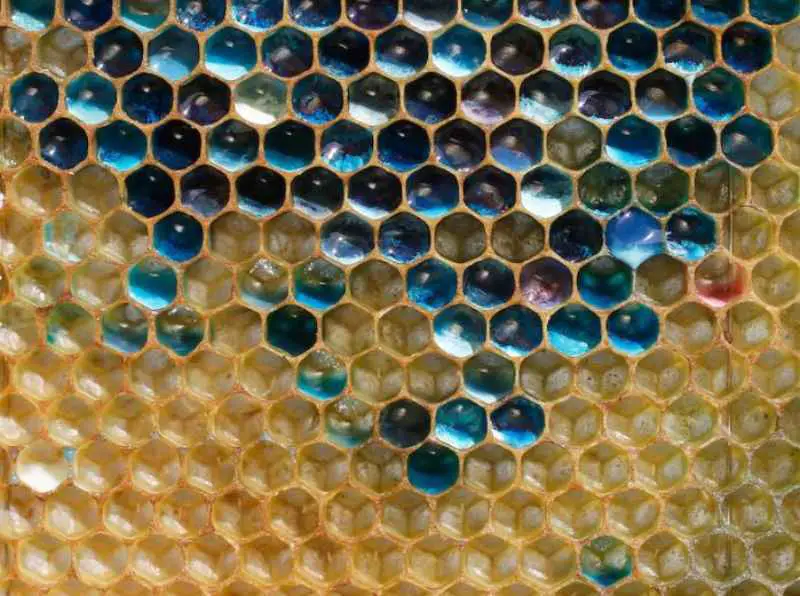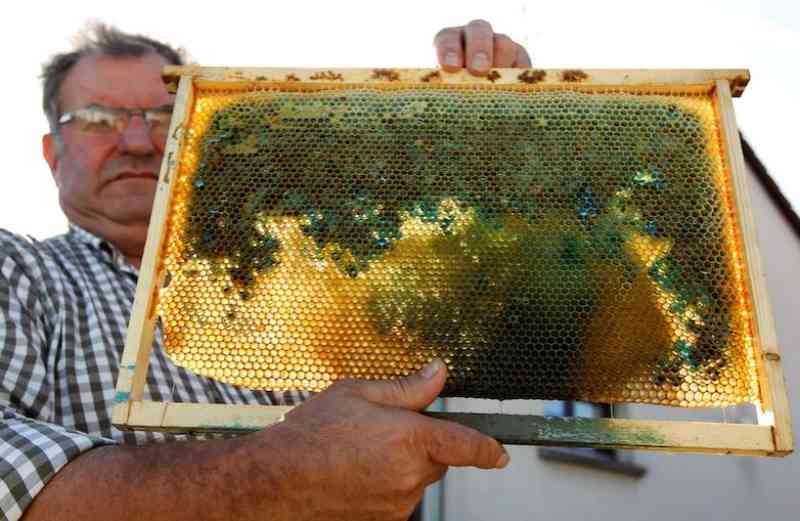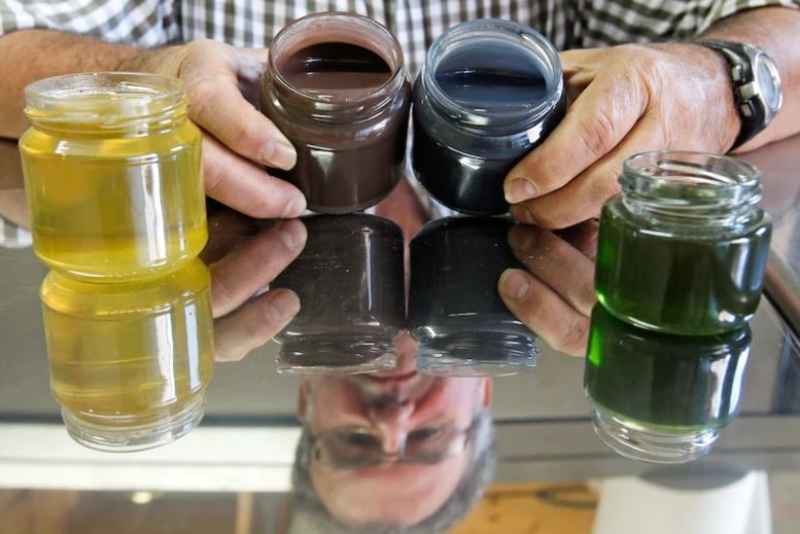M&M’s candy-taste Addicted Bees produced Blue and Green Honey

In a peculiar and unexpected turn of events, beekeepers in the Alsace region of Ribeauville, France, recently noticed something unusual among their bee colonies: honey with an astonishing blue and green hue. This discovery puzzled and intrigued both beekeepers and scientists alike, prompting an investigation into its origins and implications.
The Phenomenon Unfolds
Beekeepers initially observed bees returning to their hives with colored substances not typically seen in natural environments. This observation led to the production of honey that ranged in colors from shades of blue to green, deviating significantly from the usual golden tones. Concerned about the purity and marketability of their product, beekeepers sought to understand the cause behind this phenomenon.

Unraveling the Mystery
The investigation traced the source of the colored substances to a biogas plant located approximately 4 kilometers away from the affected bee colonies. This plant, it was revealed, processes waste materials from a nearby Mars, Inc. facility responsible for producing M&M’s candies.
These candies are renowned for their vibrant colored shells, which include hues of red, blue, green, yellow, and brown.
The bees, it appears, were attracted to the colorful sugar residues originating from the candy shells. Foraging bees, in their quest for sugary substances, found their way to the biogas plant where these residues were present.
They collected these colored sugars and brought them back to their hives, where they were subsequently incorporated into the honey production process.

How Bees Produce Honey
To understand how these colorful sugars ended up in honey, it’s important to grasp the honey-making process itself. Bees collect nectar from flowers, which they ingest and store in a specialized stomach.
Enzymes in their saliva begin to break down complex sugars in the nectar during this ingestion process. Once back at the hive, bees regurgitate and pass the processed nectar to other worker bees who further process and store it in honeycomb cells made of beeswax. Over time, excess moisture evaporates from the nectar, transforming it into honey.

©honeybeehaven
Environmental and Economic Impact
While the phenomenon of blue and green honey is certainly intriguing from a scientific standpoint, it poses significant challenges for beekeepers. The presence of unnatural additives in honey not only affects its quality and taste but also its marketability.
Beekeepers in the Alsace region expressed concerns over the financial implications of this contaminated honey, as it cannot be sold at market rates due to its impurity.

Industry Response and Future Outlook
Upon learning of the issue, the management of the biogas plant responsible for inadvertently attracting the bees with candy residues expressed surprise and committed to addressing the situation promptly.
Efforts were underway to mitigate the attraction of bees to the plant and prevent further contamination of honey batches.
This underscores the unintended consequences that industrial processes can have on wildlife and biodiversity, even in seemingly unrelated contexts like candy production and honeybee behavior.
Moving forward, careful consideration of environmental impacts and proactive measures are essential to prevent such incidents and safeguard both honeybee populations and honey quality.
In the words of Albert Einstein, “If the bee disappeared off the surface of the globe, then man would have only four years of life left.” This adage reminds us of the critical role bees play in agriculture and ecosystems worldwide, urging us to protect and preserve these invaluable pollinators.
